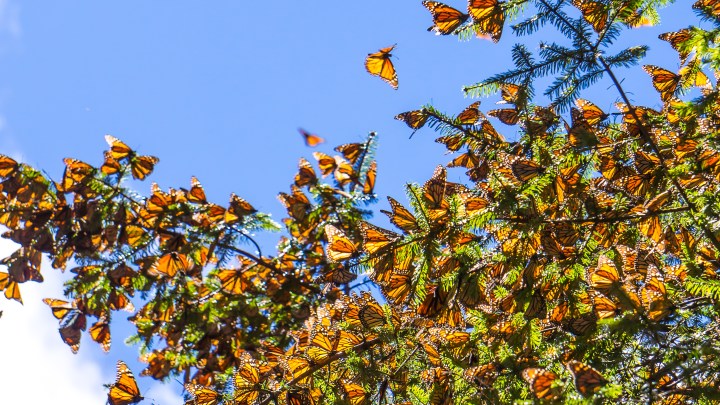Why do monarch butterflies arrive on the day of the dead?
A recent video, narrated by American actor Will Smith, mentions a rare coincidence: the arrival of monarch butterflies in the Mexican state of Michoacán on the day that defines the face of that region of the country: “the Day of the Dead”.
More and more, The flower par excellence to place the “altars” in which, popularly, the most loved deceased of the family is remembered, has the color of monarch butterflies: the cempasuchil.
Shutterstock | Maridav
Originally from Mexico (although now more than half of the annual production that feeds Mexico comes from China), its name derives from the Nahuatl language ‘Cempohualxochitl’, which means: twenty flowers or more flowers.
In this syncretic tradition, which mixes elements of Christianity that arrived in the lands of Michoacan in the sixteenth century at the hands of Vasco de Quiroga and the worldview of the original peoples (Tarascos, Purépechas), it is like an x-ray of the crossbreeding of deep Mexico.
If in Michoacán – and by extension in other regions of Mexico – the cempasúchil flower is linked to the sun, the monarch butterfly is linked in western Mexico to the return of souls on the Day of the Dead.
The flower that guides the way back
So things, in a beautiful metaphor, It is the cempasuchil flower that is placed on the “altars” and on the graves of relatives to guide the path of souls and arrive – like monarch butterflies – to their home.
But they only return for one day, the very day when, for many years and without scientists knowing exactly why, the butterflies have come from a long journey between 2,000 and 3,000 kilometers.
Some – as the document narrated by Will Smith says – come from small remote villages in the Iowa steppe; others from Canada or the Midwestern states of the United States.
Butterflies arrive to complete their reproductive cycle in the forests and high mountains of Michoacán, while, in popular tradition, the dead arrive to once again enjoy their favorite foods and be with the family in one night than in countries like Pátzcuaro and Janitzio becomes magical.

Shutterstock | JHVE Photo
The “altars” and tombs, in addition to the cempasúchil flower, are filled with the food and drink that the deceased liked, confetti, candles and photographs of the relative who will return on the night of November 1 (day of all the saints and small children who are dead) and be with them for the whole of November 2nd.
World Heritage
UNESCO has declared the Day of the Dead (2008) Intangible Cultural Heritage of Humanity, “for its importance and significance as a traditional expression – contemporary and living at the same time -, integral, representative and community”.
According to this organization, “the annual meeting between indigenous peoples and their ancestors plays a notable social function by affirming the role of the individual within society. It also contributes to strengthening the cultural and social status of the indigenous communities of Mexico “.


